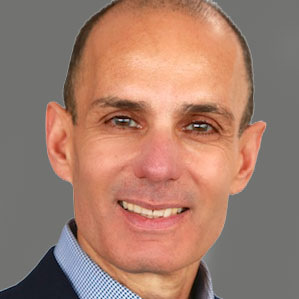Do not be afraid of the roller coaster of taking a stand
Taking a stand is like putting on a fresh pair of glasses. You start seeing things more clearly.
I was working with the middle managers of a global technology-based company. This group was suffering from a lack of internal cohesion and trust, plus communication issues between its members. These negative dynamics had been going on for so long that it was hard for the managers to tell if their trust issues were coming from personal relationship issues or from the fact that businesses and functions were simply not working together cohesively and effectively. However, one thing was clear to the managers – that their issues were hurting productivity, business results and morale in their wider organization.
In our meeting, the managers decided to tackle their problem head-on. They had an honest conversation in which they took stock of their issues and frustrations. They talked about the type of peer and functional dynamic they wanted to have in the future, and at the end of the day, they took a bold stand to make a significant improvement in their trust, cohesion and communication dynamics. Everyone left the meeting feeling good and committed to drive the change they wanted.
When we met again 60 days later to follow up and continue the process people were somewhat deflated and resigned. When I asked why they stated that since our last meeting things actually got worse, rather than better.
When we probed deeper we discovered – and they all acknowledged this – that things didn’t, in fact, get worse, in fact, they got a little better, However, because their level of tolerance and patience for the issues became much lower, their issues felt more painful.
This is a typical dynamic when you take a stand!
When you have tolerated a state of dysfunctionality in an area that you care about for a long time you tend to become cynical and resigned about change. If you experience an “Aha moment!”, or an epiphany, or a paradigm shift you will start seeing things differently. As a result, you will become excited and hopeful about the change you want. It’s like having an awakening from a state of numbness. However, with the awakening comes a renewed sense of responsibility and ownership, which will inevitably make you less tolerant to dysfunctionality.
The more you understand this dynamic the more effective you will be at navigating through it without invalidating your stand, the change you want or your journey to get there.
So, how do you push on and materialize the changes that you took a stand for?
By speaking, behaving and acting consistently with your change.
What does this mean?
Speaking differently:
When you take a stand to create a better future state, the way you speak about it will have a big impact on your ability to realize it. In a different company, I was attending a meeting where team members were reviewing a bold project they took on to improve their operational processes and efficiency. Throughout the presentation, the project manager kept making undermining comments about the project, such as: “This project is so challenging and hard…” and “We are doing our best, but not sure we can make it…” He kept referring to his future as “If we make it…” versus “When we make it…” He may have thought that these comments were charming, but I wanted to scream: “Why do you keep second-guessing your commitment?!”, “Why are you conveying such an undermining perspective about your future?!”,”Stop speaking like that!”.
Let’s be real – there are no guarantees that you will succeed in realizing any commitment or stand. In addition, you should not be inauthentic or lie about challenges and difficulties. However, there is always an empowering authentic way to account for the challenges and still speak powerfully about the future you have taken a stand about.
Acting and behaving differently:
Once you take a stand for a better future, put yourself in that future state and use that future state as the reference for defining your actions and behaviors. Ask yourself, looking from the future backward toward today, “What actions and behaviors should I start, stop or do differently?”.
Don’t guess or speculate. Let the future guide you in determining what new behaviors you should adopt and practice.
Make a list of these actions and behaviors, especially the new things and then do what you know is needed. Actually, start doing things differently and stop things that don’t support your new future.
Starting, stopping and changing actions and behaviors is often not easy. Old habits tend to pull you right back toward them. However, the more you make your promised changes public the more you will close any possibility of hiding or retreating. Make sure you build the support structure of committed people around you who will remind you, hold you to account and not buy into your excuses if/when you renege on the behavior changes you have committed to.
By understanding what you should expect when taking a stand, you will increase your possibilities, choices and power to create a desired future that is greater than what is going to happen anyways.





Leave a Reply
Want to join the discussion?Feel free to contribute!